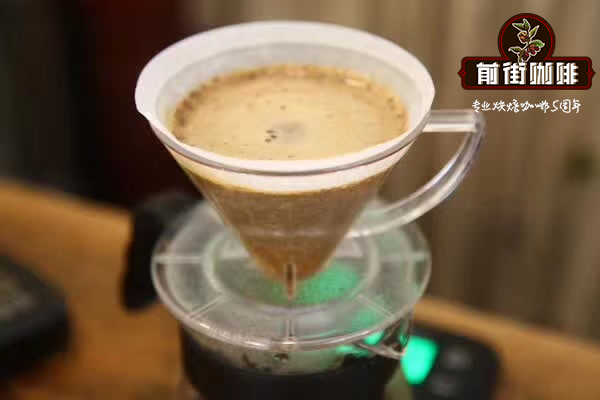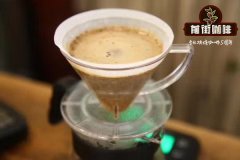Honduras Orange Farm Honduras Orange Farm Katuai

Professional Coffee knowledge Exchange more information about coffee beans Please note the coffee workshop (Wechat account cafe_style)
Qianjie-Honduras Sweet Orange
[Honduras Sweet Orange Orange]
Honduras El Naranjo
Country: Honduras
Production area: Kala Marcala
Altitude: 1425 m
Variety: Kaduai
Treatment: washing
01 | Product description
Honduras is located in central Central America, with the Caribbean Sea in the north, the Pacific Ocean in the south, Laura in the west, Tuvaldo in the southwest, and Nicaragua in the south. The area is 112492 square kilometers, and the length of the coast is about 1033 kilometers. Except for the coastal plains, the whole territory is mountainous, with the highest elevation of 3000 meters in the northwest and more than 2400 meters in the south. The main rivers in the territory are the Koko River, the Paraca River and the Kuang River. Rivers from the inland mountains cross each other and flow into the ocean respectively. Many basins and river valleys have been formed between the branches of the mountains. The large basins are the Xilipi and Rapagu Alai basins, and the main river valleys are the Kogua and Harbin River valleys.
The whole country can be divided into four natural geographical areas: the low areas of northern coastal areas, the coastal plain areas of the north, the central highlands and the lowlands along the Pacific coast. Along the coast, there are mainly the Bali Group and the Sika Group, which are made up of stars and chess cloth. The terrain of Honduras is rugged and the weather is multi-climatic. It is located in the rainforest of the coastal plain of Central America, with an annual average of 31 ℃. The average annual climate is 23 ℃, and the rainy season is from June to November.
When it comes to coffee production, the geographical conditions of Honduras are not the same as those of its nearby coffee-producing countries, such as Malaysia and Nicaragua. There are 280,000 square meters of coffee shops in Honduras, mainly small coffee shops, most of which are less than 3.50 square meters. These coffee plants account for 60% of the total coffee production in Honduras. In the coffee shop, because the planting land is located in the mountain area, people pick coffee beans by hand and process them carefully in order to produce more delicious coffee beans. Honduras collects 3 million bags of coffee every year and provides you with a wide range of coffee, which has become one of the top 10 coffee exporters in the world.
Sweet Orange Coffee (El Naranjo) is located in Marcala, one of the most famous producing areas in Honduras. Honduras has natural soil and water. Sweet Orange Coffee in Honduras grows a batch of coffee coffee bars. Sweet orange cymbals are also named after camouflage, so the sweet orange oyster is a tall wild orange oyster, and the wild orange fragrance is very strong. Here the green coffee has the sweet feeling of being rich, and the orange fruit also gives the coffee the fragrance of flowers and fruits. The varieties now cultivated are Kaddura, Bourbon and Rosa. In addition to fruits and coffee bars, coffee beans also have fertilizers that protect the protection of coffee and take the outer fruit of coffee nuts as the main ingredients.
Last year, in 2016, the sweet orange won the 14th place in the extraordinary Cup, and the female owner Carmen (Carmen Fabiola Fiallos Melendez) realized the dream of becoming a boutique coffee shop. Jikala is located in the La Paz region, and its coffee can be named after Tabbara, another famous producing area in Honduras. The Caballero family also has a farm in Kala, and they won the 2016 championship on the farm in La Paz.
Unlike big diners, Dominguez is both a host and a coffee maker. It was only after marriage that Carmen began to make coffee. She cooperates well, she goes through the process of harvesting and drying, and her husband peels off the flesh. What they hope to give to their children is not only a coffee farm, but also their affection for coffee. The family has been involved in the planting and promotion of coffee bars for generations. Roger is a third-generation consumer. He started coffee. Through the efforts of his family, he now has four coffee brands, and Sweet Orange is one of them. The whole village covers an area of 43 centimeters, with an average elevation of 1650m.
The coffee beans of Honduras are large in shape, small in size and shiny in color. In order to facilitate harvesting, farmers will trim coffee bars to no more than 150 centimeters, and because they are too high, they have to set up ladders to pick them. This is not only time-consuming, but may also cause damage to the trees because they break branches. As the ripening period of each fruit of coffee beans is different, in order to maintain the good quality of coffee beans, it is necessary to pick them manually, and then pick out the ripe fruits from them. For the same coffee fruit, it often takes several weeks to pick before all the fruits are harvested.
02 | processing method
Because there are too many deficiencies in the daily law, the water washing method has been developed. Water washing is the most widely used treatment method at present, and the biggest difference from the daily method is the use of fermentation to remove fruit juice.
Processing process
1. Remove floating beans: pour coffee beans into a large tank, the incompletely developed bad beans will surface, and the mature fruit will sink to the bottom of the water. At this time, the floating beans on the surface will be removed, that is, the steps of removing floating beans will be completed. Usually, the greater the fruit, the better the maturity.
two。 Remove the skin and pulp: through the pulp remover, remove the real exocarp and pulp of the coffee fruit. It leaves fruit, endocarp and pericarp.
3. Fermentation: the purpose of this step is to use biological processing to remove the fruit. When the coffee fruit processed by the pulp remover is put into the fermentation tank for 16-36 hours, the fermentation bacteria will dissolve the fruit.
4. Washing: after the fermentation and removal of the fruit, the coffee beans will be washed again because the bacteria and bacteria will remain on the coffee beans. In order to wash the wine, this step consumes a lot of water and ends up baking by the daily method, so it always has a light fruity flavor in the taste.
END
Important Notice :
前街咖啡 FrontStreet Coffee has moved to new addredd:
FrontStreet Coffee Address: 315,Donghua East Road,GuangZhou
Tel:020 38364473
- Prev

Brazilian Queen Manor Yellow Bourbon Brazilian Queen Manor Yellow Bourbon
Professional coffee knowledge exchange More coffee bean information Please pay attention to coffee workshop (Weixin Official Accounts cafe_style) Front Street-Brazil Queen Manor Yellow Bourbon Brazil Queen Manor [Country] Brazil Production area: So Paulo State near So Sebastio da Grama [Manor name] Queen Manor (Fazenda Rainha)[Garden owner] Regina Helena Mello d
- Next

Yega Xuefei Peach Coffee Yega Chefe Honey to deal with Peach Coffee
Professional Coffee knowledge Exchange more Coffee Bean Information Please contact Coffee Workshop (Wechat account cafe_style) Front Street-Essex Obiya Yega Chefe Honey processing Zone: Ye Jia Xuefei Honey processing Zone: Yega Chuefei idido Plant altitude: 2000-2200m processing method: honey processing species: native species level: G1 | site introduction Ethiopia |
Related
- Why are the coffee in some coffee shops not enough after being frozen? What should I make up for my American latte cappuccino coffee after being frozen?
- How much water does it take to steam coffee by hand? Why is the coffee brewing and steaming time 30 seconds? What is the purpose of steaming coffee?
- The suspected drink contains too much caffeine! Overlord Tea Lady responds urgently!
- Starbucks rejects antique paper coupons?! Netizen: Missed marketing opportunities!
- What ratio of water temperature and ground does the smart cup method use to press coffee? The difference between brewed coffee and filtered coffee?
- What is the standard process for the purpose of coffee cup testing? What is the difference between hand-brewed coffee and cup testing?
- How to use hand-brewed coffee paragon small golden balls? How does cold coffee lock in the aroma of coffee?
- Is American coffee black? What is the difference between American coffee and drip coffee?
- Unexpected! Well-known tea beverage brand Lele Tea will withdraw from the Zhengzhou market!
- Starbucks enters the fashion and beauty industry?! Netizen: Give me an ice American eye cream

